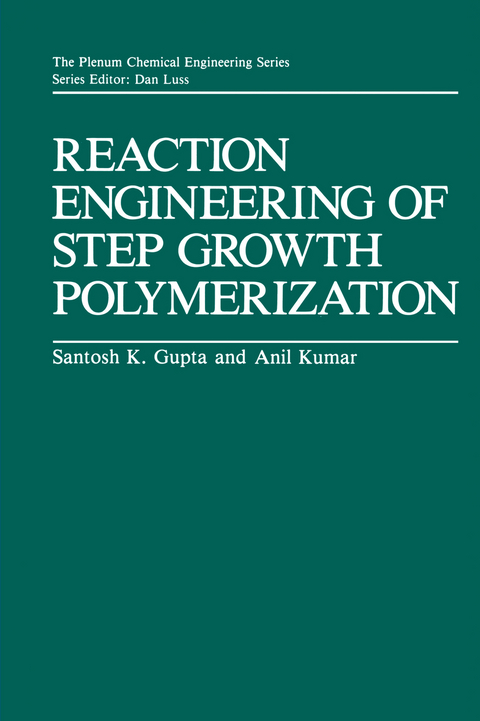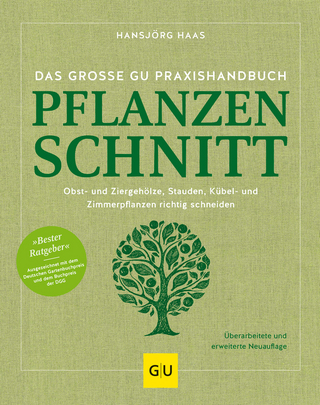
Reaction Engineering of Step Growth Polymerization
Springer-Verlag New York Inc.
978-1-4612-9008-7 (ISBN)
The literature in polymerization reaction engineering has bloomed sufficiently in the last several years to justify our attempt in putting together this book. Rather than offer a comprehensive treatment of the entire field, thereby duplicating earlier texts as well as some ongoing bookwriting efforts, we decided to narrow down our aim to step growth polymerization systems. This not only provides us the lUxury of a more elaborate presentation within the constraints of production costs, but also enables us to remain on somewhat familiar terrain. The style and format we have selected are those of a textbook. The first six chapters present the principles of step growth polymerization. These are quite general, and can easily be applied in such diverse and emerging fields as polymerization applications in photolithography and microelec tronics. A detailed discussion of several important step growth polymeriz ations follows in the next five chapters. One could cover the first six chapters of this book in about six to eight weeks of a three-credit graduate course on polymerization reactors, with the other chapters assigned for reading. This could be followed by a discussion of chain-growth and other polymeriz ations, with which our material blends well. Alternately, the entire contents of this book could be covered in a course on step growth systems alone.
1. Introduction.- 1.1. Step and Chain Growth Polymerizations.- 1.2. Step Growth Polymerization.- 1.3. Molecular Weight Distribution.- 1.4. Measurement of MWD and Its Moments.- 1.5. Types of Reactors.- 1.6. Conclusions.- References.- Exercises.- 2. Linear Step Growth Polymerization Following the Equal Reactivity Hypothesis.- 2.1. Introduction.- 2.2. Rate Constants for Elementary Step Growth Polymerization Reactions.- 2.3. Equal Reactivity Hypothesis.- 2.4. Kinetic Model of Irreversible Step Growth Polymerization under the Equal Reactivity Hypothesis.- 2.5. Experimental Verification of the Kinetic Model.- 2.6. Irreversible ARB Polymerizations with Monofunctional Compounds in Batch Reactors.- 2.7. Polymerization in Plug Flow Reactors (PFR) with Recycle.- 2.8. ARB Polymerization in Homogeneous Continuous-Flow Stirred Tank Reactors (HCSTRs).- 2.9. Reversible ARB Polymerization.- 2.10. Conclusions.- Appendix 2.1. Moment Generation Function.- References.- Exercises.- 3. Linear Step Growth Polymerization Violating the Equal Reactivity Hypothesis.- 3.1. Introduction.- 3.2. Irreversible ARB Polymerization with Oligomers Having Chain Length Dependent Reactivity.- 3.3. Reversible Step Growth Polymerization with Oligomers Having Chain Length Dependent Reactivity.- 3.4. Step Growth Polymerization Involving Asymmetric Functional Groups.- 3.5. Conclusions.- References.- Exercises.- 4. Nonlinear Step Growth Polymerization.- 4.1. Introduction.- 4.2. Average Molecular Weights and the Onset of Gelation in Batch Reactors.- 4.3. Postgel Properties for Nonlinear Polymerizations in Batch Reactors.- 4.4. Effect of Unequal Reactivity of Functional Groups.- 4.5. Experimental Results.- 4.6. Kinetic Approach in the Polymerization of RAf in Batch Reactors.- 4.7. Intramolecular Reactions in NonlinearPolymerization.- 4.8. Nonlinear Step Growth Polymerization in HCSTRs.- 4.9. Conclusions.- References.- Exercises.- 5. Mass Transfer in Step Growth Polymerization.- 5.1. Introduction.- 5.2. Polymerization with Negligible Mass Transfer Resistance (Semibatch Reactors).- 5.3. Polymerization with Finite Mass Transfer Resistance.- 5.4. Finishing Reactors.- 5.5. Step Growth Polymerizations at High Conversions.- 5.6. Conclusions.- References.- Exercises.- 6. Optimal Control of Step Growth Polymerizations.- 6.1. Introduction.- 6.2. The Basic Algorithm.- 6.3. Optimization of ARB Polymerization in Batch Reactors.- 6.4. Optimization of Irreversible ARB Polymerizations in HCSTRs.- 6.5. Periodic Operation of HCSTRs.- 6.6. Conclusions.- References.- Exercises.- 7. Nylon Reactors.- 7.1. Introduction.- 7.2. Polymerization of ?-Caprolactam.- 7.3. Hydrolytic Polymerization of ?-Caprolactam in Batch Reactors.- 7.4. Nylon 6 Polymerization in Isothermal Recycle Reactors.- 7.5. Nylon 6 Polymerization in HCSTRs and in Cascades of Reactors.- 7.6. Effect of Nonidealities.- 7.7. Simulation of Industrial Reactors.- 7.8. Optimization of Nylon 6 Reactors.- 7.9. Cyclization Reactions in Nylon 6 Polymerization.- 7.10. Polymerization of Nylon-6,6.- 7.11. Conclusions.- References.- Exercises.- 8. Polyester Reactors.- 8.1. Introduction.- 8.2. Transesterification Stage of PET Formation from Dimethyl Terephthalate.- 8.3. Optimization of Ester Interchange Reactor.- 8.4. Direct Esterification of Terephthalic Acid.- 8.5. Polycondensation Step (Second Stage) of PET Formation.- 8.6. Wiped Film Reactors for the Final Stages of PET Formation.- 8.7. Unsaturated Polyester.- 8.8. Conclusions.- Appendix 8.1. Orthogonal Collocation Technique for the Solution of Partial Differential Equations.- References.-Exercises.- 9. Urethane Polymers and Reaction Injection Molding.- 9.1. Introduction.- 9.2. Modeling of Cross-Linked Polyurethane Formation.- 9.3. Gelation.- 9.4. Approximate Rate Expression for Urethane Formation.- 9.5. Reaction Injection Molding.- 9.6. Impingement Mixing in RIM.- 9.7. Filling and Curing in Molds in RIM.- 9.8. Conclusions.- References.- Exercises.- 10. Epoxy Polymers.- 10.1. Introduction.- 10.2. Taffy Process.- 10.3. Advancement Process.- 10.4. Curing of Epoxies.- 10.5. Conclusions.- References.- Exercises.- 11. Polymerization with Formaldehyde.- 11.1. Introduction.- 11.2. Modeling of Novolac Reactors.- 11.3. Concentrations of Sites oeT, oi, pi, and pe in Novolac Formation.- 11.4. Molecular Weight Distributions in Novolac Polymer Formation.- 11.5. Modeling of Resole Reactors.- 11.6. Conclusions.- References.- Exercises.
| Reihe/Serie | The Plenum Chemical Engineering Series |
|---|---|
| Zusatzinfo | 444 p. |
| Verlagsort | New York, NY |
| Sprache | englisch |
| Maße | 152 x 229 mm |
| Themenwelt | Sachbuch/Ratgeber ► Natur / Technik ► Garten |
| Naturwissenschaften ► Chemie ► Anorganische Chemie | |
| Naturwissenschaften ► Chemie ► Organische Chemie | |
| Naturwissenschaften ► Chemie ► Physikalische Chemie | |
| Technik ► Maschinenbau | |
| ISBN-10 | 1-4612-9008-2 / 1461290082 |
| ISBN-13 | 978-1-4612-9008-7 / 9781461290087 |
| Zustand | Neuware |
| Haben Sie eine Frage zum Produkt? |
aus dem Bereich


